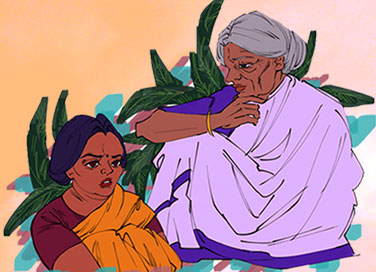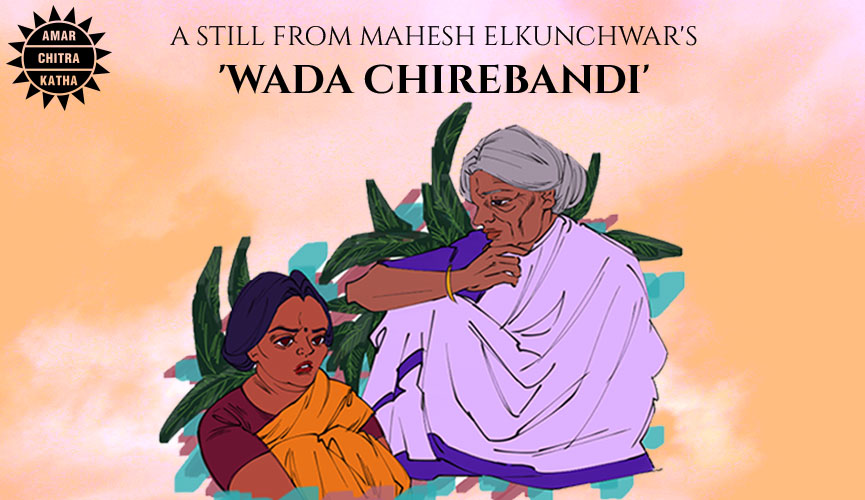The Evolution of Indian Theatre
- February 24, 2021

The Evolution of Indian Theatre
- February 24, 2021
By Mehar Dhillon
A familiar definition of theatre is that it is a deliberate performance created by live actors and intended for a live audience, typically making use of scripted language. It initially began around the 15th century BCE, as a way to aid ritualistic practices. Evidence of this is present in Vedic texts, as dramas were enacted during Yajna ceremonies. However, the origins of Indian Theatre, to date, are the subject of dispute and debate. Though, it is widely believed that the art form finds its origins in Sanskrit drama and the works of Bhasa, Kalidasa, Shudraka, Vishakhadatta, Bhavabhutti and Harsha. Sanskrit drama’s golden period began in the 2nd century BCE and its end in the 10th century CE was marked by several foreign invasions and rulers that banned this art form, thus causing its decline. The essence of Sanskrit theatre, however, continued to live on in the southern part of India, especially in the form of Koodiyattam.
Following the decline of Sanskrit theatre, folk theatre emerged in the 15th century AD. We had the Jatra in Bengal and Orissa, Bhavai in Gujarat, Nautanki in Uttar Pradesh, Tamasha in Maharashtra, Ankiya Naat in Assam and Yakshagana in Karnataka.
To receive more such stories in your Inbox & WhatsApp, Please share your Email and Mobile number.
Radical changes in Indian theatre took place in the 17th century AD with the arrival of Britishers in India. The East India Company’s presence in Calcutta had a dramatic effect on Indian theatre and plays. They brought with them their own dramas and introduced ways through which theatre’s production value could be dramatically increased, such as the use of intricate sets and special costumes. Theatre groups took to adapting the works of Shakespeare, Brecht and Lessing for the entertainment of the growing urban and working classes. The effects of industrialization brought about a rise in urban entertainment and people flocked from all over to view these performances in Calcutta. This allowed for the Parsi theatre, a term used to describe an influential theatre tradition presented by Parsis, to flourish during this time. It employed captivating music, dance and drama in a very theatrical manner, making the viewing experience a very enriching one. A new method of performing plays surfaced in Maharashtra. Kathakars and kirtankars began singing certain parts of the story and dialogue in an attempt to enhance the performance and succeeded greatly. Annasaheb Kirloskar was a pioneer of this field, being the first musical dramatist. This era of musicals in Maharashtra was known as the Gandharva period.

Indian theatre slowly started to branch out to involve literary drama, as the demand for it began to increase. Playwrights like Rabindranath Tagore helped in the advancement of literary drama greatly. Tagore masterfully melded Eastern and Western story elements in his work in order to create compelling and genius plays. His play Chitrangada was so successful that it was performed internationally.
With the arrival of the talkies era in Hindi cinema in the 1930s, the theatre was pushed into the background. It was in the 1950s, post-independence, when its popularity was restored through the efforts of many experimental and mainstream theatre artists and the Indian People’s Theatre Association.
In Bengal and parts of Kerala, the leftist movement was taking place and thus, the theatre was transformed into a political tool. Utpal Dutt, a pioneering figure in Modern Indian Theatre, enacted many plays such as Kallol, Manushar Adhikar, Tiner Talwar, Louha Manob and Maha-Bidroha which were soaked in Marxism.
In 1962, Ebrahim Alkazi took over The National School of Drama as its director. Alkazi recognized the responsibility the director and actors involved in theatre shouldered as the interpreters of their time and how it was imperative that they brought insight and awareness to the text, in order to make it relevant to a contemporary audience. He implemented a systematic and practical manner in which the persons involved in the theatre were to conduct their practice. This helped improve the overall structure of the play and made the communication of the story much more effective and meaningful. While the National School of Drama was undergoing a dramatic shift under the direction of Alkazi, an unprecedented exchange of regional dramas was taking place throughout the country. Figures like Vijay Tendulkar and Mohan Rakesh contributed heavily to this exchange. The regional theatre was no longer limited to its area of origin and the gaps between separate regions, in the context of plays, was beginning to be bridged. Young directors and actors of this time like Vijaya Mehta began to rise in popularity during this period. Vijaya Mehta’s plays managed to skillfully and beautifully portray the complexities and subtleties of human nature and the connections we make with each other.
Prime Minister Jawaharlal Nehru was a patron of the arts and contributed heavily towards its development and enrichment. He established national art academies all over the country, that were geared towards refining, nurturing and preserving the arts. Institutions such as the Sangeet Natak Akademi provided many successful theatre artists with the space to refine their skills and add to the theatre scene of India.
Television has always challenged the survival of live theatre. Indian dramatist Badal Sircar propagated the idea of a flexible, portable and inexpensive theatre, which allowed for freedom from costly paraphernalia such as the sound equipment, auditorium and so on. Sircar’s practice of this idea for 15 years proved that voluntary donation provided by even the poorest community sufficed. He stated that not only did his theatre survive but it thrived.
Indian theatre has transformed from being restricted to ritualistic practices that took place only in palaces to a versatile and mammoth art form that has influenced masses over the ages and is performed in the biggest live theatres and on the simplest of streets. Indian Theatre has existed from the first millennium BCE, constantly evolving and progressing. As long as the human race exists, this cherished art form will continue to thrive.
To receive more such stories in your Inbox & WhatsApp, Please share your Email and Mobile number.

Comic of The Month
Dr Kotnis in China
In 1938, twenty-eight-year-old Dr Dwarkanath Kotnis was part of a medical mission that India sent to aid China in its war with Japan. Dr Kotnis was committed to saving lives, even in the precarious war-time situation. He remained behind to continue his work in China after the rest of his group returned. He was, and remains, a selfless and fearless hero to the people of China and India alike.